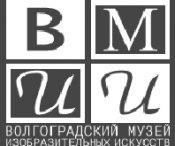
Information technology and museums: The Volgograd Museum of Fine Arts to open virtual branches
By the implementation of museum initiative “Virtual branch”, the events of the Year of Culture have started in the Volgograd region.
As part of the cultural-educational project “The I. I. Mashkov Volgograd Museum of Fine Arts: the virtual branch”, the governor of the Volgograd region Sergei Bozhenov awarded 38 heads of specialized institutions from Volgograd and districts of the region certificates for sets of multimedia equipment.
The project “The I. I. Mashkov Volgograd Museum of Fine Arts: the virtual branch” was developed by specialists of the museum and will be available in 38 museums of the Volgograd region.
- To facilitate the exchange exhibitions between museums, was drafted the “Virtual Branch”, by which all of our events, exhibitions, lectures will be sent to all regional museums, - said Deputy Director of the I. I. Mashkov VMII Varvara Ozerina.
The project implementation involves the creation of a single exhibition space with the use of modern multimedia technology on the territory of the Volgograd region; the creation of the complex media-product (content) on the basis of the collection of the I. I. Mashkov Volgograd Museum of Fine Arts; the inhibiting of electronic collections, virtual exhibitions and tours, based on the VMII works, the implementation of all the spectrum of museum services (creative meetings, concerts, poetic evenings, discussions, master-classes, lectures, interactive games) for different categories of viewers in the form of a video archive in a format of online-conferences. The saturation of the museum space with the latest technologies will allow attracting the youth and family audience, improving the quality and diversity of museum services, modernizing work of cultural institutions in the region. Development of the project will make it possible to conduct the exchange of exhibitions and educational projects involving museums, educational centers from other regions and countries.
In addition, the project implementation will contribute to the preservation of genuine museum pieces, not subjected to risks, associated with their movements on the field areas to create similar educational projects not in the virtual, but in traditional format.

